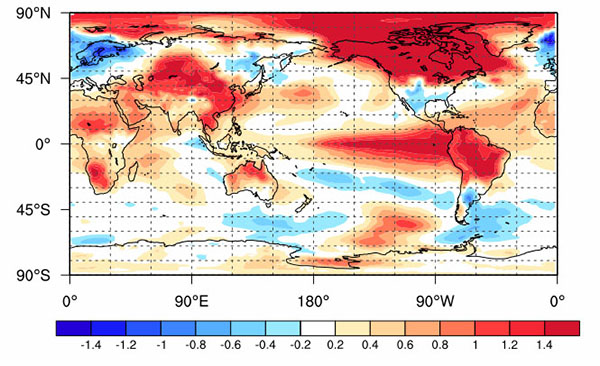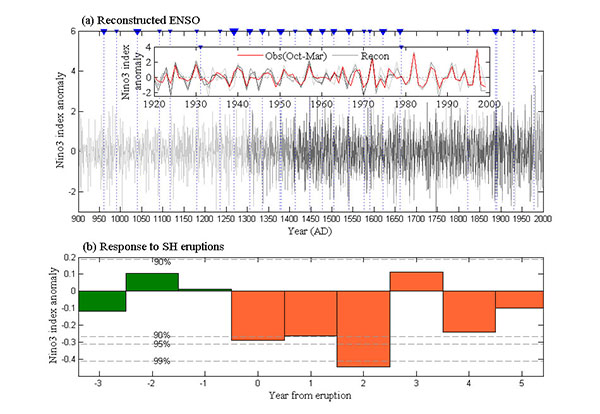The scorching heatwaves of the summer and autumn of 2023 shook the world and raised a pertinent question: Will this lead to the warmest winter the globe has ever seen? From the hottest days to the hottest seasons, 2023 has been making headlines for its unprecedented heat. In the midst of global warming, the re-emergence of the El Niño phenomenon after seven years has added fuel to the heat. This streak of breaking historical temperature records has sparked widespread interest in the upcoming winter trends for 2023/24.
In response to these concerns, researchers from the Institute of Atmospheric Physics of the Chinese Academy of Sciences conducted extensive research. Using multiple self-developed climate prediction systems, the team studied the anomalies in the global climate for the winter of 2023/24.
Their latest findings, published in the journal
Advances in Atmospheric Sciences, predict the imminent maturity of a moderate-to-strong (ENSO index > 1.5 ℃) Eastern Pacific El Niño during the upcoming Northern Hemisphere winter. This event is poised to trigger anomalous anticyclone activity in the Northwest Pacific, initiating a Pacific-North American atmospheric teleconnection wave pattern, thereby influencing the winter climates of East Asia and North America.
But how warm will this winter truly be? The report highlights the combined effects of the El Niño event and the long-term global warming trend. Regions in the mid-low latitudes of Eurasia and most parts of the Americas are likely to experience an exceptionally warm winter. There's a 95% chance that the global average surface temperature for the winter of 2023/24 will set a new historical record.
In particular, surface temperatures in China could be more than twice as high as usual, potentially setting the highest winter temperature record since 1991.
Predicting the climate system requires not only understanding internal variability, but also considering external forcings. For example, the consecutive La Niña events from 2020 to 2022 delayed global warming, highlighting the importance of external forcings. Recent research by the United States also shows the significance of external forcings, particularly the 2019 Australian wildfires, in triggering multi-year La Niñas. The mechanism involves wildfire aerosols creating low clouds over the Southern Ocean, lowering sea surface temperatures, and shifting the Intertropical Tropical Convergence Zone northward, favoring the occurrence of multi-year La Niñas.
While the credibility of these external forcings remains uncertain due to limited instances, studies of past climatic volcanic eruptions offer more insights.
Research by the Sun Yat-sen University Volcanic Research Team indicates that over the past millennium, eruptions of 26 volcanoes in the Southern Hemisphere were frequently followed by three-year La Niña events, supporting the hypothesis that cooling in the Southern Ocean can trigger multi-year La Niñas. The Australian wildfires cool the Southern Ocean by forming low clouds in the troposphere, while the Southern Hemisphere volcanoes cool the ocean by reflecting sunlight with aerosols in the stratosphere.
These findings present a glimpse of what the coming winter may bring, but uncertainties remain as external factors continue to play a role in shaping global weather patterns. As the world braces for the potential impact of a winter following an unprecedentedly hot year, researchers are actively monitoring these complex interactions to better understand and predict the dynamics of the global climate.

Multiple Model Ensemble Prediction of Global Temperature Anomalies for the 2023/24 Winter. Unit: °C (Image by IAP)
Reconstruction of ENSO over the Past Thousand Years and Three-year La Niña Responses after Tropical Volcanic Eruptions. (Image by IAP)






